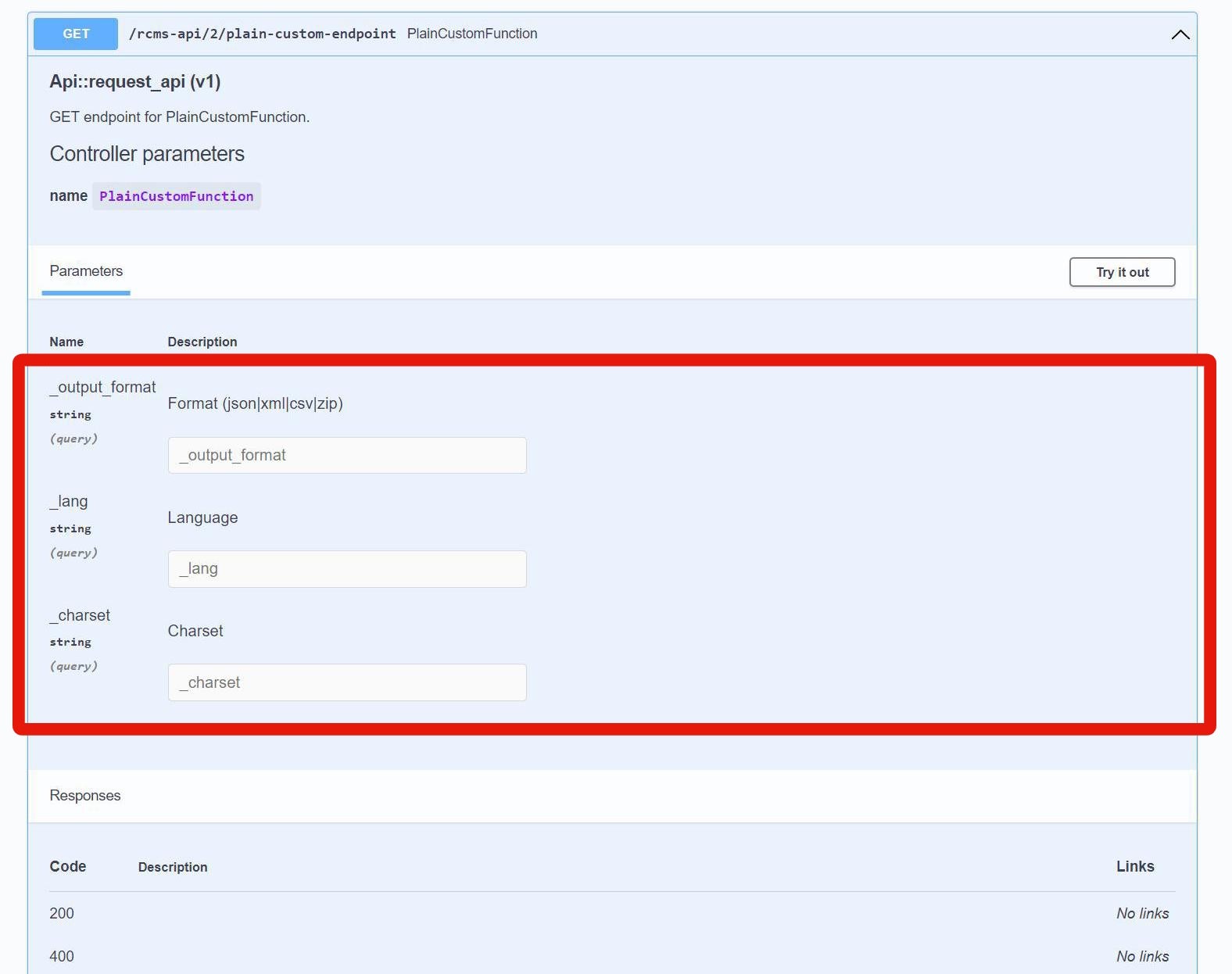How do I verify requests that cannot be verified with Swagger UI?
During endpoint creation, if you used a custom function to split the contents of the GET query, you may not be able to verify them in Swagger UI. For such queries, you need to copy the Curl command and execute it in your terminal for verification.
Obtaining the Curl command
Navigate to the Swagger UI of the target endpoint and copy the contents under "Curl" in the [Responses] section.

curl -X 'GET' \
'https://[SITE-KEY].g.kuroco.app/rcms-api/2/plain-custom-endpoint' \
-H 'accept: */*'
Paste the copied URL into your terminal to confirm the results. Make sure to include ?[QUERY KEY NAME]=[VALUE] at the end of the URL to reference the GET query.

Why some requests cannot be verified with Swagger UI
Swagger UI generates screens based on Kuroco's OpenAPI Specification. Therefore, if you are sending requests beyond the OpenAPI definition, you need to make your own requests with Curl instead of verifying them via Swagger UI.
For example, a custom function that splits the contents of a GET query named status cannot be verified in Swagger UI, because the status parameter is not displayed there.
 The function branches from the
The function branches from the status parameter of the request, thus falling beyond the scope of the OpenAPI definition. Therefore, Swagger UI cannot issue the request as expected by the custom function.
When you cannot verify a function in Swagger UI, please use the Curl command as described above.
Support
If you have any other questions, please contact us or check out Our Slack Community.